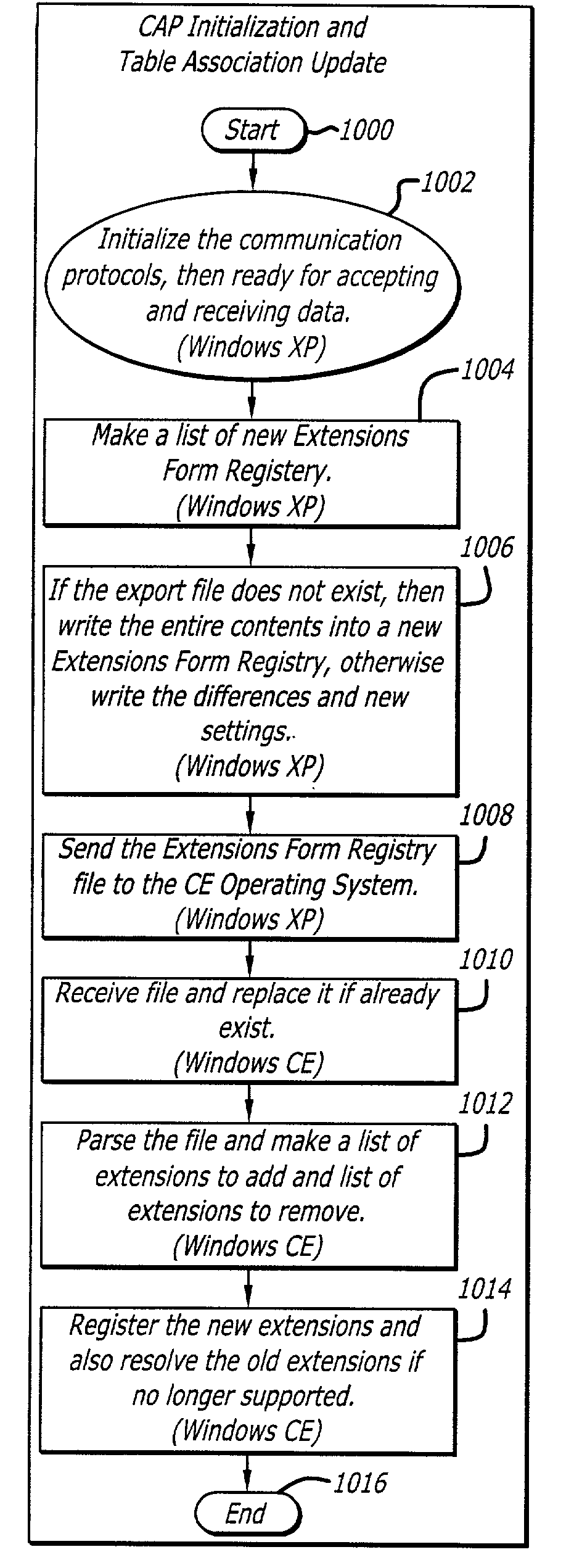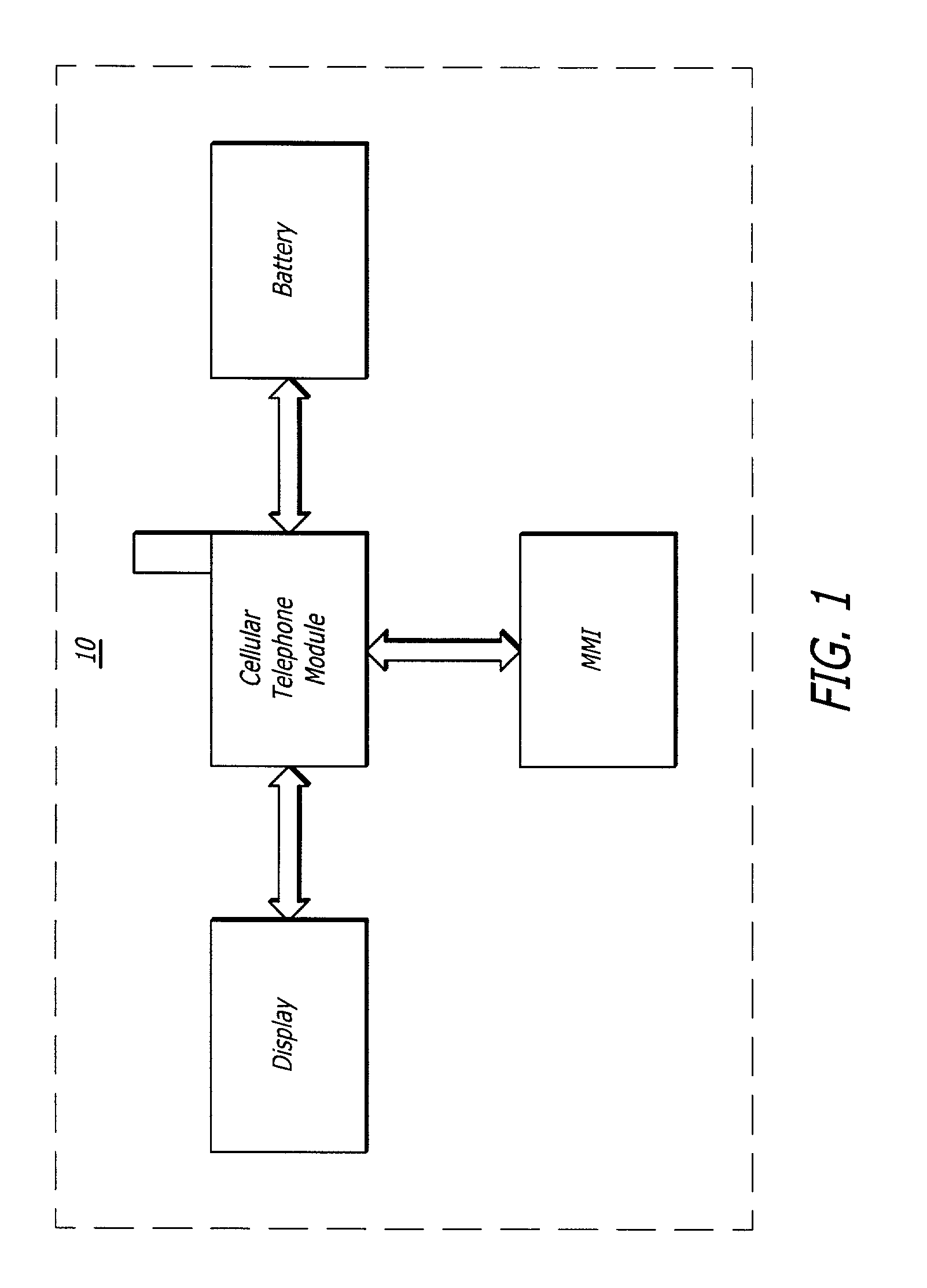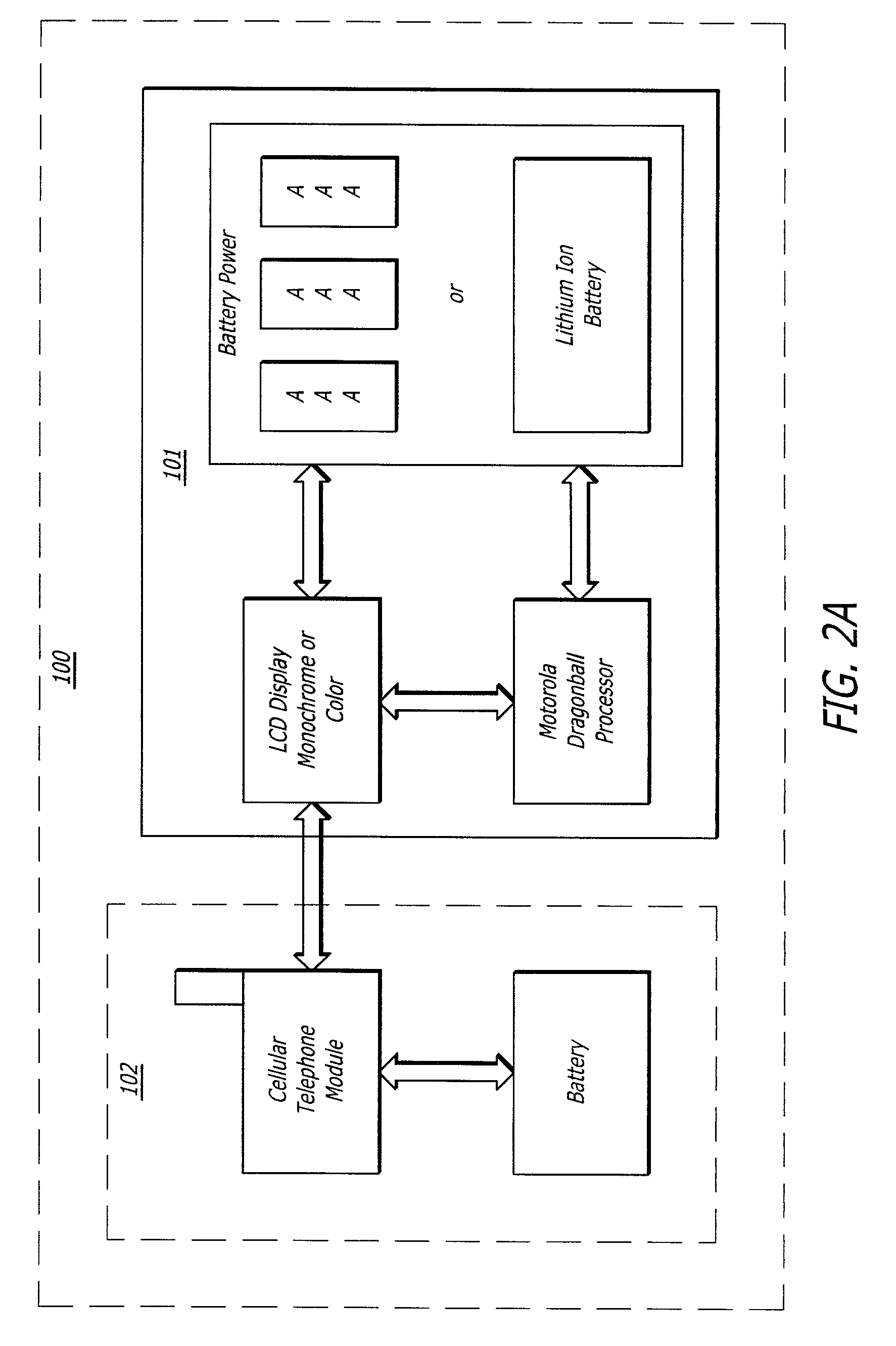Novel personal electronics device
a technology of personal electronics and electronics, applied in the direction of power management, instruments, high-level techniques, etc., can solve the problems of heavy devices, awkward synchronization requirements, time-consuming maintenance,
- Summary
- Abstract
- Description
- Claims
- Application Information
AI Technical Summary
Problems solved by technology
Method used
Image
Examples
Embodiment Construction
[0013] First (embedded) and second (non-embedded) processors are disposed in a handheld housing for energizing by a power source in the housing. The first processor requires less energy than the second processor. The first and second processors respectively perform simple and complicated functions. The second processor is normally sleeping and is activated by the first processor to perform the complicated functions in accordance with determinations by the first processor. Programs and data for operating the second processor flow initially into the second processor. The second processor processes the programs and data and introduces the processed information to a read-only memory in the first processor. When the second processor is to perform such programs and utilize such data, the first processor introduces such program and data to the second processor for processing by the second processor.
[0014] FIG. 1 is a block diagram of a typical prior art cellular telephone;
[0015] FIG. 2A is...
PUM
 Login to View More
Login to View More Abstract
Description
Claims
Application Information
 Login to View More
Login to View More - R&D
- Intellectual Property
- Life Sciences
- Materials
- Tech Scout
- Unparalleled Data Quality
- Higher Quality Content
- 60% Fewer Hallucinations
Browse by: Latest US Patents, China's latest patents, Technical Efficacy Thesaurus, Application Domain, Technology Topic, Popular Technical Reports.
© 2025 PatSnap. All rights reserved.Legal|Privacy policy|Modern Slavery Act Transparency Statement|Sitemap|About US| Contact US: help@patsnap.com



